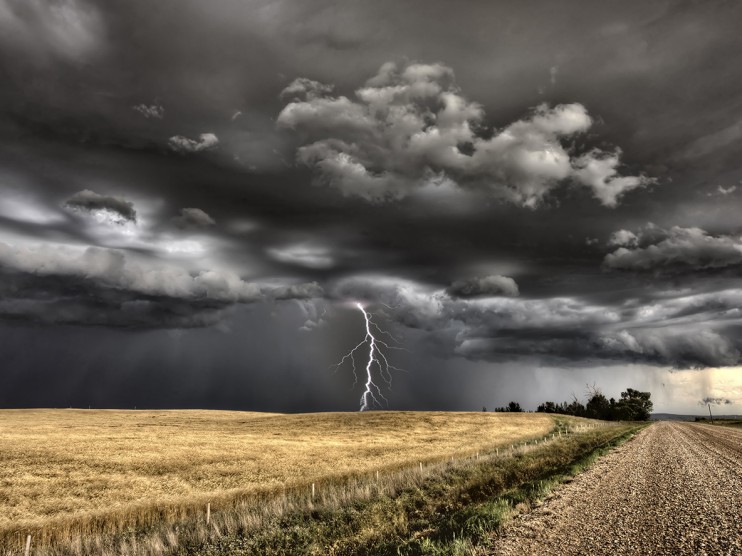During a lightning storm, the safest place to be is indoors. However, there are still several safety precautions one needs to take to stay safe in your own home. The three most common ways lightning can enter your home are through a direct strike, through inner/outer wires and pipes, and through the ground.
To know how at risk your home is during a storm, you can use a guideline that meteorologists call “The 30-30 Rule.” If you see lightning and then hear thunder within 30 seconds, move indoors and take necessary safety precautions. This typically indicates that a storm is fewer than 6 miles away, which is close enough for a lightning strike. Then, stay indoors for at least 30 minutes after you hear the last clap of thunder at the end of the storm.
Tips for Staying Safe in an Electrical Storm
The following guidelines can give you additional protection against electrical injuries during harsh, stormy weather:
- Install whole-house surge protectors to protect your appliances from lightning. This is perhaps one of the most important measures you can take to protect yourself and your family during a storm. It only takes milliseconds for lightning to cause a power surge, but having whole house protection will safeguard your most important electrical appliances from burnout.
- Stay away from windows. Both windows and doors can provide a path for a direct lightning strike into the house.
- Do not touch electrical outlets or appliances once a storm is underway. Electricity and shocks can be transferred to you through these outlets, so they are dangerous to interact with during a thunder or lightning storm. Ideally, you will want to unplug electrical appliances before a storm, as soon as you hear there are severe or dangerous weather conditions. Refrain from using any appliance that connects to the wall; only use battery powered appliances until the storm is over.
- Avoiding corded appliances includes telephones. If you need to use the phone during a lightning storm, use a cell phone or cordless phone. Electricity can travel through phone cords to you. Phone use during storms is the main cause of electrical injury in the U.S., so this safety guideline is essential to remember.
- Most people know that water and electricity don’t mix, and this rule applies for storm safety too. Stay away from faucets, bathtubs, showers, pools, and any appliances connected to your plumbing. Avoid doing loads of laundry at this time, as washers and dryers are connected to both your electrical and plumbing lines, making them a hazard during a storm.
Injuries caused by lightning strikes are more common than most people realize, but the above considerations and safety guidelines can help secure both you and your home during inclement weather.

